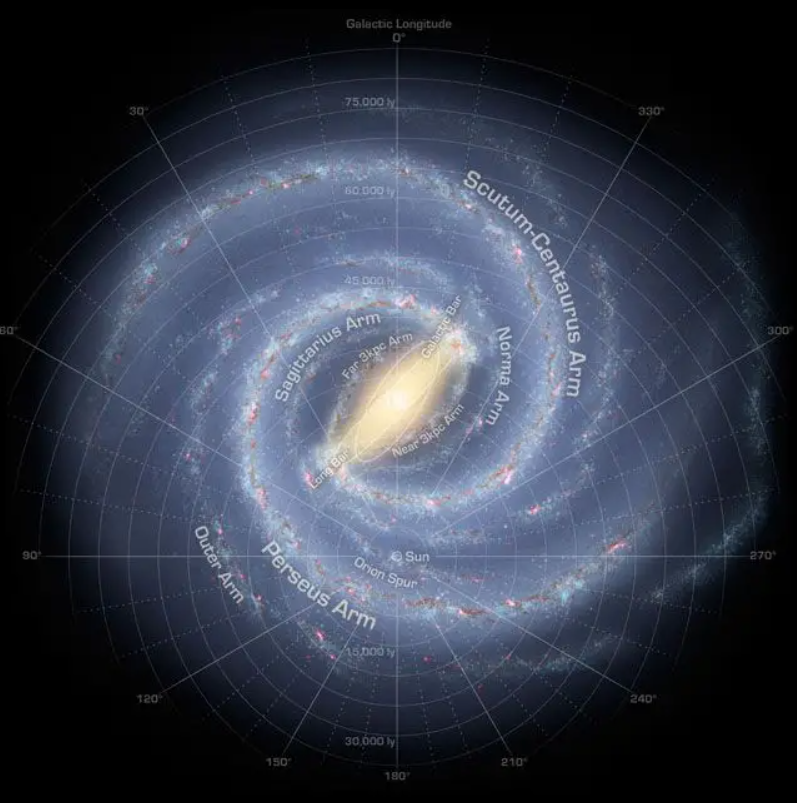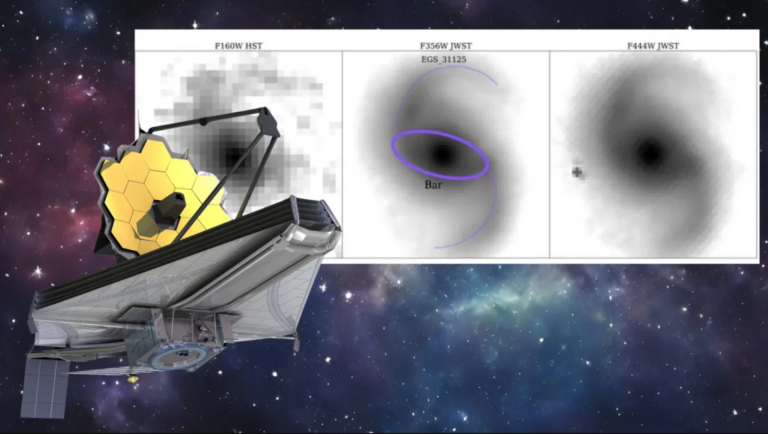The JWST has detected galaxies in the early universe that experienced remarkably rapid growth.
Employing the James Webb Space Telescope, scientists have ascertained more than expected that the early universe galaxies speedy expansion vastly removed the limit set by the previous studies. Surprisingly, the same team has detected that the cosmos was even “ more ordered” in the past, about 10 billion years ago when compared to the previously presumed point.
Directed by scientists from the Durham University in U.K., an international group have proved this by studying at the events that led to the formation of “star bars” prehistoric galaxies that proceeded by just a few billion years after the Big Bang.
Star bars, which are the elongated “inhabited” regions with higher star density, are the belt-like zones across the centers of spiral galaxies, such as the Milky Way, and some other disc shaped galaxies. Thanks to this, gas begins to congregate on a smaller and smaller area and gravitation is becoming even more dominant, thus knitting the cloak of darkness closer to the centers of the respective galaxies. The observed central bar structures are an evidence of galaxy transitioning to more stable and mature state.
“Early was faster than expected with respect to the apparent maturity of the galaxies in the universe”, Zoe Le Conte who is the team chief and a researcher at the said university said. “Discovering this object during that period is rather astonishing as for someone the universe during that period should be highly chaotic and violent with a large number of pelting galaxies and gas yet to turn into stars.”
“But, through the help of JWST, it becomes evident that a lot of those bars are at an earlier stage of universe’s existence, unlike what we had thought. Instead, it indicates that galas were relative stable entities and some revisions about the early galactic development are needed.”
Discovering with the James Webb Space Telescope
This is not the sole time where scientists have found a glimpse into aged in the first 13.8 billion years of the universe.
The Hubble Space Telescope had seen the above, but the observations were limited to a time range of 8 to 9 billion years. The greatly modified sensitivity range of JWST and its broader light wavelength range have enlarged the sections of time which have been viewed at the least a billion years. Additionally, JWST has shown and formed bar in galaxies that existed between 8 to 11.5 billion years ago. Also a noteworthy finding for the team is the fact that about 20% of the 368 early-stage disk galaxies they studied have bars, double the number obtained in the study of Hubble.

“The results are that we have identified twice more number of bars as those found by Hubble’s previous studies. We are then led to believe that the evolutionary process of bars as a result of mergers has a longer period than what was presumed before,” Dimitri Gadoti, a member of the team and a scientist at Durham University, claimed. Despite of this, he commented, he remained excited with the phenomenon
The team that worked further and discovered the age in the past with JWST also observed less defined bar structures in galaxies Galaxies in earlier stages of the universe were not being as developed, and end up being less developed. On the contrary, it could be possibly that the shorter bars had already existed within the earlier galaxies of the universe. On the other hand, though the sensing precision of JWST is quite high, to be able to detect the short bars that settles the early galaxies still is not possible.
Equipped with these figures, the team plans to tap into JWST to lift the veil farther when they will be able to see as far as 12.2 billion years ago.This endeavor could shed light on whether bar growth was a common occurrence just 1.6 billion years after the Big Bang.
“The model of the universe is now more accurate and so we review and examine them to determine if they are in agreement with the JWST’s observations. I contend that we must challenge the entrenched theories in our minds and improve our understanding.” Gadotti argues.
Publication of the team’s research was featured in the journal Monthly Notes of the Royal Astronomical Society.
Do not forget to share your opinion with us to provide you with the best posts !




0 Comments